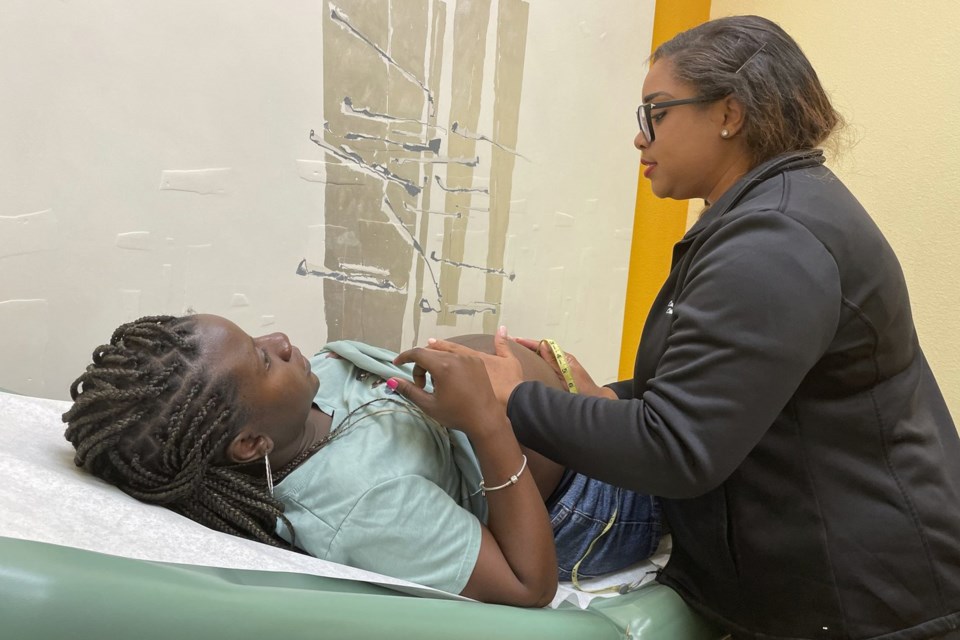How can the U.S. solve its growing maternal mortality crisis? Health experts say one way is to look to other countries.
The U.S. has one of the of any wealthy nation — hovering around 20 per 100,000 live births overall and 50 for Black moms, according to the World Health Organization and U.S. health officials. Several European countries have rates in the single digits.
Research shows the vast majority of pregnancy-related deaths are preventable. Public health experts blame the United States’ high rates on a range of problems, such as inequities in getting needed health care, systemic racism, at times poor-quality medical care and a rise in chronic conditions among women of childbearing age.
But experts believe solutions abroad can be translated to the U.S. They say that’s already happening in some places.
The Associated Press examined what the U.S. can learn from Europe about tackling maternal mortality. Here are key takeaways.
Many European countries use proven methods. And Norway stands out
— which refers to the death of a woman from pregnancy or childbirth complications during or within 42 days of a pregnancy — generally has been rising in the U.S.
There are proven ways to prevent maternal deaths and injuries, such as ensuring quality medical care at delivery; getting to know patients; addressing issues like addiction or poor nutrition; and providing care and support after the baby is born.
One of the most important things is making sure everyone can get regular prenatal checkups, which requires having enough health care providers.
Consider Norway, which has the lowest maternal mortality rate in the world: zero. Through its universal health care system, people get free prenatal appointments at health centers near their homes.
For every 1,000 live births, Norway has 13 OB-GYNs and 54 midwives, the found, compared with 12 OB-GYNs and four midwives in the U.S.
Regular care means problems are spotted and treated early, said Roosa Sofia Tikkanen, a doctoral candidate at the Center for Global Health Inequalities Research in Norway.
“Maternal mortality is an entirely preventable event providing you have access to basic health care,” Tikkanen said. “Not high-tech health care but basic health care.”
What happens during and after delivery also makes a difference. The national rate for cesarean sections, which are more likely than vaginal births to lead to complications, is about 16% in Norway compared to 32% in the U.S. The Scandinavian country also mandates generous paid leave, which research links to better postpartum health.
A successful U.S. program is based on European models
Commonsense Childbirth, which has locations in Orlando and Winter Garden, Florida, offers a small-scale model of European care. It has clinics, a birthing center and training for health professionals.
The midwives who run the program welcome vulnerable patients that other practices turn away, such as those who are uninsured or haven’t had prenatal care until late in pregnancy.
Founded by British immigrant Jennie Joseph about 26 years ago, it has never had a maternal death.
“We have these four tenets that go with my model: access, connection, knowledge and empowerment,” she said. Some patients “cry because they’ve never had that kind of care or respect.”
Joseph’s organization relies heavily on philanthropy, which makes up about half its $3.5 million budget. This allows the clinics to accept patients who can pay little or nothing.
For women with no major health problems, research shows midwifery is cheaper globally than care led by OB-GYNs and leads to fewer medical procedures like C-sections, said Marian Knight, a professor of maternal and child population health at the University of Oxford in England.
Some of Commonsense Childbirth’s patients with complications are referred to specialists. Most choose to give birth at a local hospital, where Joseph has forged strong ties. They then return to a midwife for postpartum care.
“It’s Jennie’s National Health Service,” Joseph said with a sly smile.
___
The Associated Press Health and Science Department receives support from the Howard Hughes Medical Institute’s Science and Educational Media Group. The AP is solely responsible for all content.
Laura Ungar, The Associated Press



